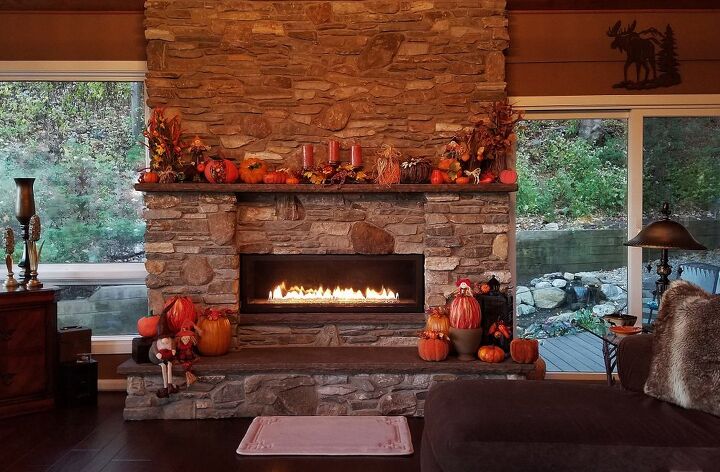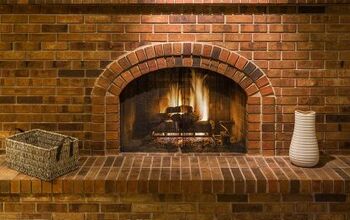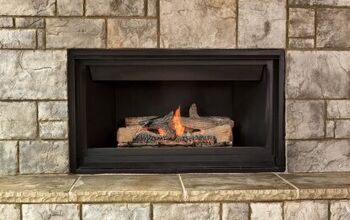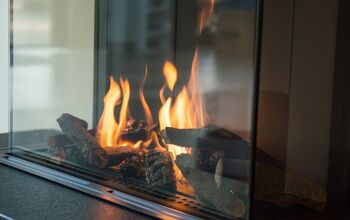Is A Hearth Required For A Gas Fireplace?

If you are contemplating the addition of a fireplace to your home as part of a remodel project, you need to consider the other additions that may be required. Some homeowners planning, such as an addition, must understand the requirements for safety, including the hearth. Different requirements depend on the type of fireplace you install.
In general, a wood-burning fireplace of any kind requires a hearth extension in front of the fireplace. Fireplaces that are gas-only and have an integral glass fire screen may not require a hearth extension. Local building codes may speak to this issue directly. In any case, the fireplace should be installed according to the manufacturer’s specifications.
The overriding concern with any fireplace installation is the safety of your home. No matter the style or type of fireplace, you must ensure that the fireplace is properly designed and installed. Many people opt for pre-built fireplace inserts. However, custom-built fireplaces are still found in upscale homes. It is important to understand the parts of a fireplace to grasp the needs of your home.
Do You Need Brick or Stone Fireplace Installation?
Get free, zero-commitment quotes from pro contractors near you.

The Truth About the Hearth
Most people refer to the area in front of their fireplace as the hearth. In truth, the hearth is the floor of the firebox. The area in front of the firebox is called the hearth extension and serves several purposes.
Safety is one of the most important reasons for a hearth extension, especially for wood-burning fireplaces. Wood can pop ending embers out of the firebox and onto the area in front. A hearth extension, usually made of non-flammable material, protects your home from these embers.
Logs have been known to collapse as they burn and may tumble out of the firebox. A non-flammable hearth extension protects your home from fire and damage should an inadvertent log roll send hot coals out of the firebox.
The Types of Gas Burning Fireplaces
Many people are unaware or uneducated about the parts of their fireplace. Each part of a fireplace performs an important function in a fireplace. There are some misconceptions about the different parts of a fireplace. You should understand how these parts work together to create a safe environment in your home.
Since the question here involves gas-burning fireplaces, we can assume that the fireplace is a prefab construction. Masonry site-built fireplaces differ considerably and must be considered separately. For the most part, prefab fireplace units come in three types.
Woodburning with Gas
Many prefabricated fireplace units are designed to burn real wood logs. These fireplaces create almost the same atmosphere and feel as a site-built masonry fireplace. These prefab units don’t require expensive and extensive masonry work or special footings. These prefab fireplaces can sit on a wooden subfloor surrounded by typical wood and sheetrock walls.
Any wood-burning fireplace should have a non-flammable hearth extension installed in the area in front of the fireplace. Many building codes specify the depth and width of the hearth extension. You should check with your local building inspection department to ensure your plan meets these requirements.
Gas Only Fireplace with an Open-Face
Some prefab fireplace units are designed to mimic the look of a real wood-burning fireplace. These kits don’t have a fully enclosed glass front, and most include ceramic realistic-looking logs. Gas is plumbed into the fireplace to create the warmth and look of a natural wood-burning fire.
While these open-face gas-only fireplaces don’t pop like real wood, most manufacturers suggest that a non-flammable hearth extension be placed in front of the fireplace. The local building code may be more stringent in its requirements. You should check with the building inspection officials before starting any construction. Adding a fireplace to your home requires a building permit and several on-site inspections in many jurisdictions.
Gas Only Glass Enclosed Fireplace
Some prefabricated fireplace units feature a glass enclosure. In some cases, these enclosures are airtight and depend on a vent to allow outside air into the firebox for combustion. You can get these types of fireplace prefab units with separate heat exchangers. These units will heat room air and return it to your home without mixing it with the combustion air.
For the most part, these types of enclosed fireplace units don’t require a hearth extension. However, local building codes may specify requirements different than the manufacturer’s recommendations. Always check with your local building code enforcement officials before starting any project involving installing a prefab fireplace unit.
What is a Zero-Clearance Fireplace?
Zero-clearance fireplaces are prefab fireplace units intended to be installed in homes without the need for expensive and heavy masonry. This type of installation allows builders much more flexibility to place a fireplace while controlling costs.
In truth, zero-clearance is a misnomer. The zero-clearance name does not mean that a prefab fireplace insert can be installed in direct contact with combustible materials. Each manufacturer specifies the clearances from combustible materials on each side of the fireplace insert.
These clearances must be maintained for safety purposes. In some instances, building inspectors will check these clearances as part of the construction inspection process to ensure that the final installation is safe for the home and the homeowner.
How Safe are Zero Clearance Fireplace Inserts?
Zero clearance fireplaces have an excellent safety record in the United States. Most zero clearance fireplaces have a certifying label from a qualified testing laboratory. These certified fireplaces are extensively tested to ensure they perform as the manufacturer asserts.
Historically, uncontrolled fires in zero clearance fireplaces are not due to a defect in the fireplace. The usual cause of these types of fire is attributable to improper maintenance of the fireplace and the flue that carries the smoke and gases up the chimney.
Flue fires are common when an annual cleaning and inspection of the flue pipe is not carried out. These fires can easily escape the flue and involve the house’s structure. You should have the flue and fireplace cleaned and inspected by a licensed chimney sweep every year if you have a zero clearance fireplace. We suggest that you do this late in the summer before the fireplace season starts.
Is a Zero Clearance Fireplace A Good Way to Hear Your Home?
Most zero clearance fireplace units won’t provide sufficient heat for your entire house. Many other factors affect how well a zero clearance fireplace can provide heat. Some of these factors include:
- The quality of the insulation in your home
- How well-sealed your windows and doors
- The size of your home
- The efficiency of your fireplace
In most cases, a zero clearance fireplace may provide enough heat for a room. You may also notice that your main source of heat, your HVAC system, may not run as much when you are burning your zero clearance fireplace.
Those aero clearance fireplaces with built-in heat exchanges and fans can be more efficient at heating your home. However, these units are more expensive, and the installation is more complicated. Most of these units require an outside source of combustion air that requires a separate air vent for the fireplace.
Which is Better – Wood or Gas?
Arguments can be made on both sides of this argument for the environmental questions. It is hard to tell which way the scales tilt. There are many other factors to consider when choosing between gas or wood as the fuel for your fireplace. In many instances, personal feelings and opinions are as big a factor as environmental issues.
- Gas is a non-renewable resource. The amount of natural gas available in the earth’s crust is finite. Wood, on the other hand, is considered a renewable resource.
- Wood introduces potentially harmful products into the atmosphere as it burns. Wood smoke is filled with particulate matter and gases considered harmful to humans and the environment. Natural gas produces far fewer hazardous products when it is burned.
- Gas tends to be a safer fuel in fireplaces than wood. Many types of firewood burned in fireplaces can leave impurities that can build up inside the flue. Most of these residual products are flammable and can result in a flue fire that can be devastating. Natural gas, by and large, doesn’t produce these kinds of contaminants.
- Gas gives almost instant heat when needed. A gas fireplace can be ignited quickly and easily, producing almost instantaneous heat. A wood-burning fireplace can take an amazingly long time to get started unless the fireplace also has a gas burner. Some fireplace inserts have thermostats and sensors to automatically ignite the gas fireplace at a preset temperature.
- Many people still prefer the look, feel and smell of a real wood-burning fireplace with an open face. Other people want the look but don’t want the smells and aggravation of cleaning up after a wood fire.
Whatever your feeling about fireplaces, there is a solution that will give you the pleasure of a fire in your home. It is up to you to decide which type of fireplace meets your expectations and needs.
Do You Need Brick or Stone Fireplace Installation?
Get free, zero-commitment quotes from pro contractors near you.

Where and When Do You Need a Hearth Extension?
In general, if your fireplace burns wood, it should have a hearth extension. Some prefabricated fireplace units that are fully enclosed and burn only gas don’t need a hearth extension. However, in some jurisdictions, local building codes may require different installations.

Dennis is a retired firefighter with an extensive background in construction, home improvement, and remodeling. He worked in the trades part-time while serving as an active firefighter. On his retirement, he started a remodeling and home repair business, which he ran for several years.
More by Dennis Howard























![12 Washing Machine Brands to Avoid [with Recall Data]](https://cdn-fastly.upgradedhome.com/media/2023/07/31/9075781/12-washing-machine-brands-to-avoid-with-recall-data.jpg?size=350x220)



